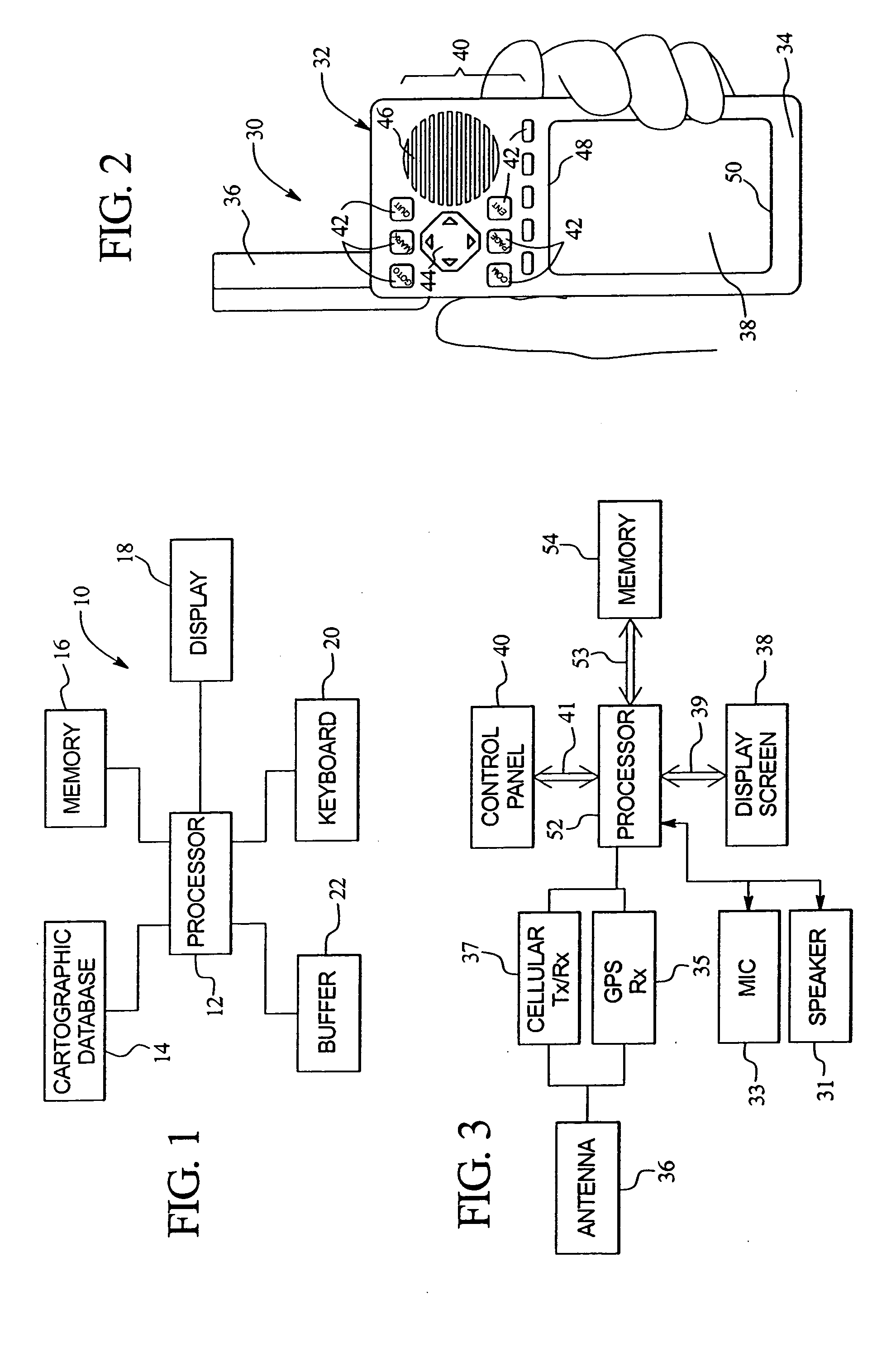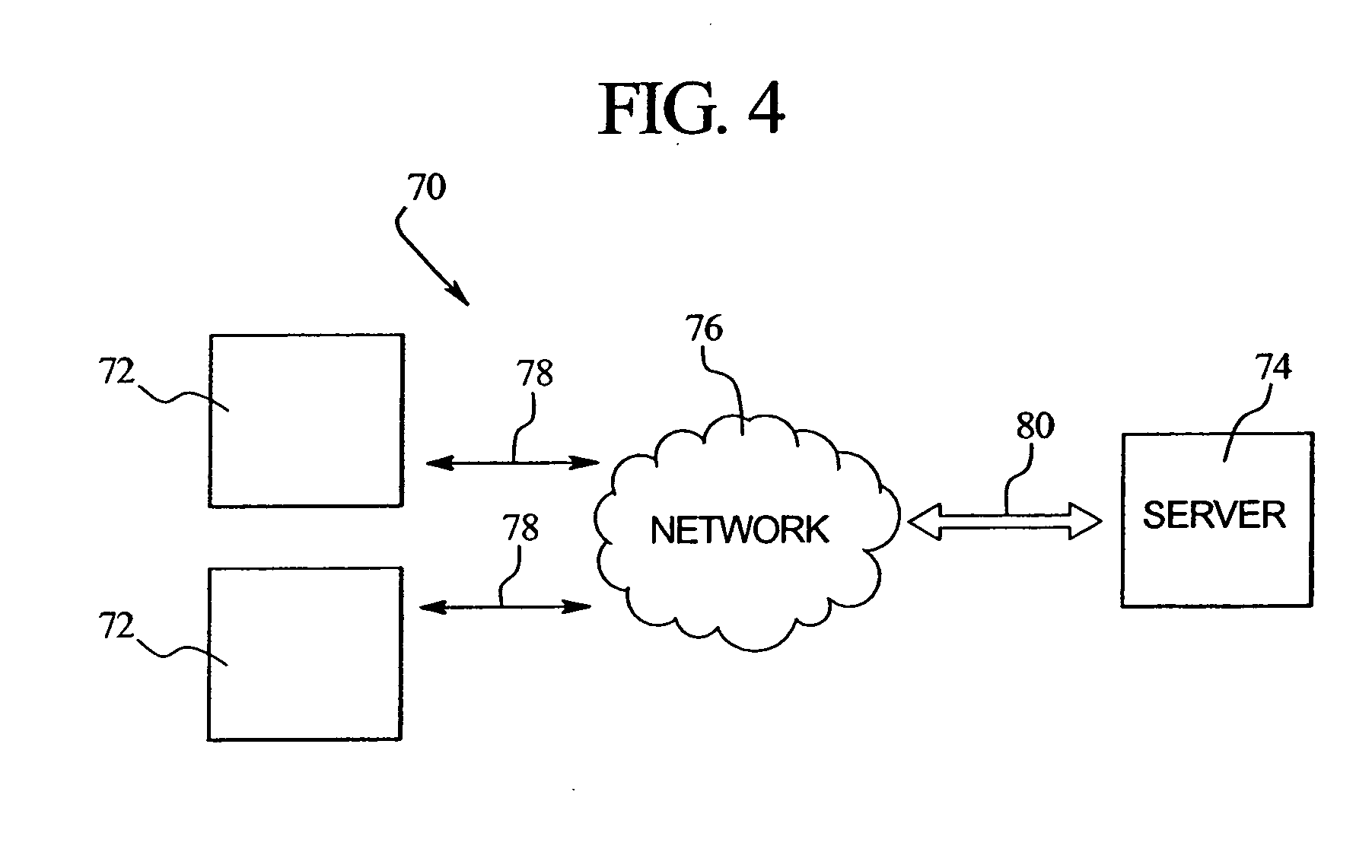System and method for calculating a navigation route based on non-contiguous cartographic map databases
a cartographic map and navigation route technology, applied in surveying, navigation, measurement devices, etc., can solve the problems of not being able conventional navigation devices were unable to provide such information, and cartographic data from one supplier does not match cartographic data from a different supplier
- Summary
- Abstract
- Description
- Claims
- Application Information
AI Technical Summary
Benefits of technology
Problems solved by technology
Method used
Image
Examples
Embodiment Construction
[0037]FIG. 1 illustrates a system 10 formed in accordance with an embodiment of the present invention. The system 10 includes at least one processor 12 for carrying out various processing operations discussed below in more detail. The processor 12 is connected to a cartographic database 14, memory 16, a display 18, a keyboard 20, and a buffer 22. Optionally, more than one processor 12 may be included. The cartographic database 14 may store data indicative of a roadway network (in full or in part) used in connection with embodiments of the present invention. The memory 16, while illustrated as a single block, may comprise multiple discrete memory locations and / or discs for storing various types of routines and data utilized and / or generated by embodiments of the present invention. The buffer 22 represents a memory storage area that may be within memory 16 or separate therefrom. Buffer 22 is used to temporarily store data and / or routines used in connection with embodiments of the pres...
PUM
 Login to View More
Login to View More Abstract
Description
Claims
Application Information
 Login to View More
Login to View More - R&D
- Intellectual Property
- Life Sciences
- Materials
- Tech Scout
- Unparalleled Data Quality
- Higher Quality Content
- 60% Fewer Hallucinations
Browse by: Latest US Patents, China's latest patents, Technical Efficacy Thesaurus, Application Domain, Technology Topic, Popular Technical Reports.
© 2025 PatSnap. All rights reserved.Legal|Privacy policy|Modern Slavery Act Transparency Statement|Sitemap|About US| Contact US: help@patsnap.com



